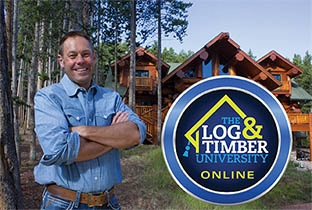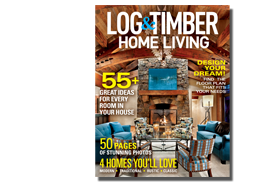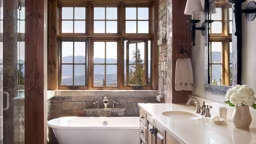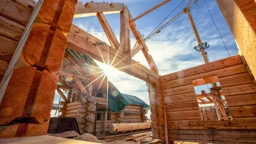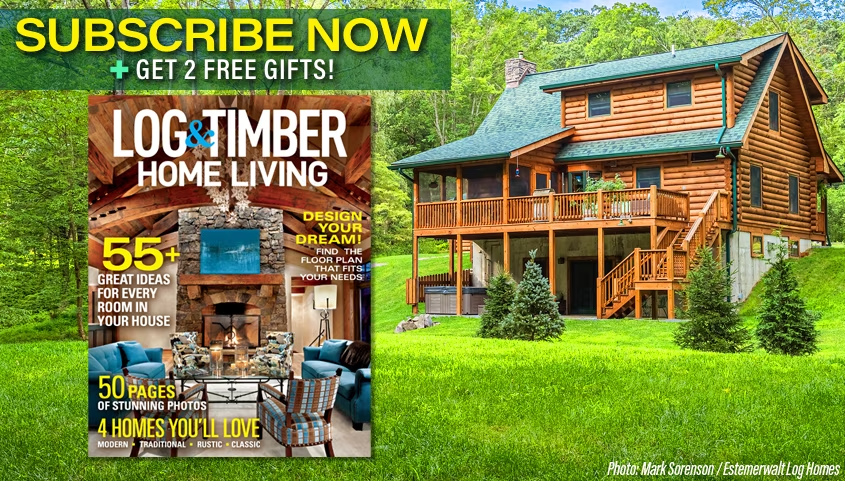
Timbercraft photo by Mark Sorenson
Are you striving to find that balance between economy and enjoyment in your timber home? You’re not alone. Everyone, no matter how small or large their budget is, enjoys saving a money on their home. But very few are willing to sacrifice their ultimate satisfaction with the outcome — and why should you? Chances are this is a place you’ve been dreaming about for years and, once you get to the construction phase, have been planning for months.
Ironically, many ways to maximize your budget and control your building costs begin in the design phase, and there are a few tricks of the trade that can, within reason, help you get everything you want. Heed this sage builder advice while you’re in the throes of construction.
Design to cut construction costs.
Homes often are designed without considering the cost of actually building it. To maximize your budget and find potential savings, one of the best things you can do is bring in the builder from the beginning.Timber home buyers often believe that you need a final design before you approach a builder. Not true! When a builder reviews a set of plans to prepare a bid, he or she takes all of a home’s complexities into account, and a good builder can look at your plan and identify ways to save money. So why not ask your builder to review your plans along the way? He or she may find unexpected ways to value-
engineer the design, streamline your build and save you some cash.
Be realistic when it comes to the benefits of DIY.
Nearly everyone looks to save a little cash by performing tasks they believe they can handle themselves, and sometimes that’s a smart solution. But if you don’t have the time or skill set to tackle a project — don’t!When the clock is ticking on a job site, nothing is more frustrating to a professional builder than having to wait a week for a DIYer to finish a task that one of his crew could have knocked out in two days. And remember: with DIY projects, you — not your builder — are on the hook for anything that is done incorrectly.
Try to cut costs outside the box.
Builders who understand timber frame homes will tell you: It’s not easy to save money on “the box,” meaning the frame, SIPs, walls, mechanicals, plumbing and wiring. Those costs will be pretty hard and fast.But you can save a lot of money on finishing materials, if you know how to shop smart. The best strategy is to start at the very beginning of the process — during the design phase. Create a checklist of everything you’ll need, from major components like flooring materials, to the tiniest details, like cabinet pulls. Include quantities, square footage, room dimensions, etc., on your list and keep it with you at all times. This way, if you see a bargain, you’ll know if it meets your needs, and you can snatch it up on the spot. Your builder likely will have some sort of onsite storage where you can stow these items until they are needed. This not only lets you take advantage of deals, it has the added benefit of having these components ready and waiting for your builder when they’re needed, rather than getting to that point before they are chosen and purchased (a practice that can lead to unnecessary construction delays and cost overruns).
Make the most of materials.
Even though we said that it’s more challenging to save money on the materials that comprise the actual structure of your home, there are decisions you can make that will improve performance and provide long-term cost savings — notably your windows, doors, roofing and others.One of the best examples of this lies in your foundation. If you know you want a finished basement, concrete masonry block may be one of the least expensive materials to buy, but it isn’t the only game in town. A more advanced product, like insulating concrete forms (ICFs), may be a viable alternative worth considering.
Soffit and fascia beneath the roofline is another area most homebuyers don’t think about much —but should. Typical wood or vinyl soffit and fascia requires more attention over the life of a home than most people realize, but if you choose a fiber-cement product, like a Hardie Board or Nichiha trim, you can significantly reduce upkeep and reap long-term savings.
When it comes to windows, historically buyers have believed only wood-framed windows are suitable for timber-framed homes, but they have the shortest lifespan and require the most maintenance of any window casing. For longevity and ease, vinyl-, aluminum- or fiberglass-clad windows are the way to go. They cost more upfront, but their durability means you’ll spend less to maintain them and you won’t have to replace them soon. They also come in an array of colors that perfectly complement timber homes.
Orientation saves money.
Homes should be built based their location. Climate-specific home design (ex: window shading from the hot sun or a steep roof for snow runoff) offers energy efficiency without costing extra cash. And proper orientation to the sun for passive- and active-solar capabilities is a must. Finally, two-story homes not only minimize the impact to the land, they provide a narrower footprint than single-level homes do, allowing sunlight to warm more rooms therefore reducing energy consumption.See also: Where Does the Money Go When Building Your Home?
